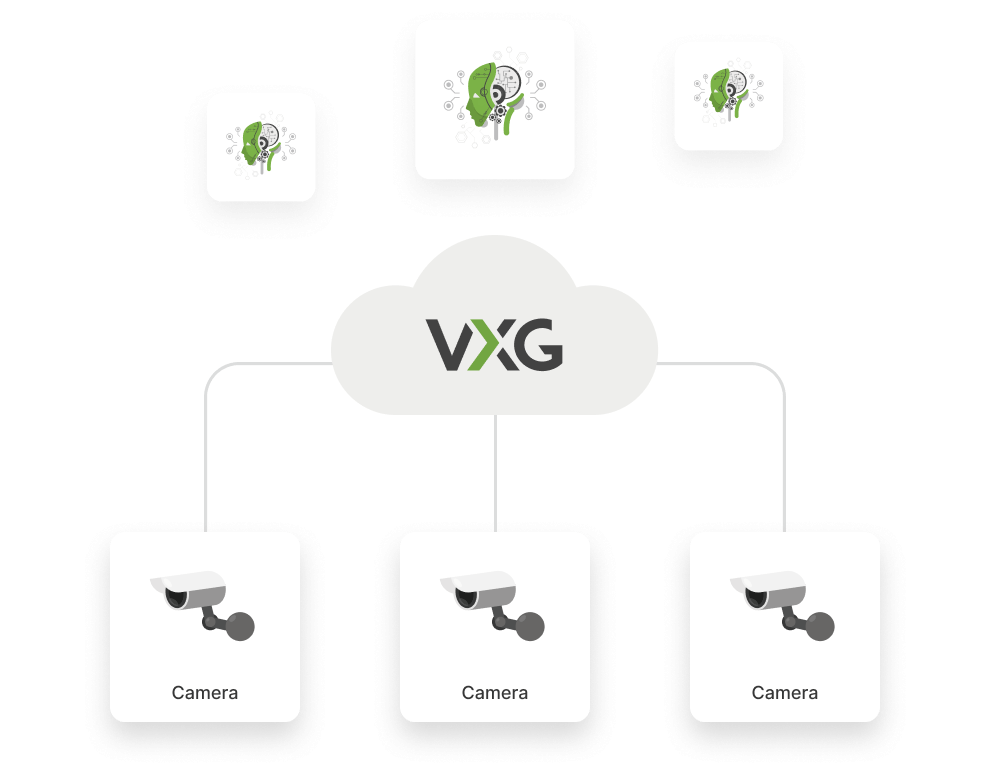Technical Terms for Video Surveillance
Cloud Video Surveillance and VSaaS (Video Surveillance as a Service) are trending themes in the security world. Compared to a traditional CCTV, DVR, NVR or VMS (Video Management Software) system, these 'somewhat' new approaches are supported by other industries push to the cloud. This new world can often be confusing with jargon, acronyms, and interchangeable or misunderstood key terms. As experts in video surveillance we have created a "List of the technical terms for video surveillance" resource to help us all better understand the enormous space. Check it out below. Let us know your thoughts and what you would add!

Video Surveillance Terminology
Security Terms & Acronyms
Cloud Video Surveillance - Traditional video surveillance is done with all video data staying local or on-premise with limited or no access to the data from outside the local network (remotely). Cloud video surveillance provides easy access to data from anywhere. It keeps data in the cloud or on-premise and has unlimited recording capability.
VSaaS - Video Surveillance as a Service. Traditional surveillance systems would normally be a one-time cost; whereas VSaaS refers to hosted cloud-based video surveillance and is a recurring cost generally charged monthly or yearly. VSaaS typically includes video management, user management, recording, remote viewing, alerts for events, video analytics, and more.
VMS - Video Management Software or even referred to as Video Management System and Video Management Solution. A VMS is a software that is deployed on-site. Traditionally, it connects to IP cameras and DVRs and provides video management, viewing, recording and playback functions.
Hybrid Cloud Surveillance - A mix between on-premise and cloud. Some data is stored locally on-site (on-prem) and some is sent to the cloud. This is a dominant trend in Enterprise, Retail and Hospitality, and other use cases where bandwidth and costs need to be optimized at various points in the day.
Cloud VMS - Cloud Video Management System (or Software). Usually, it is a Web based VMS that is hosted in the Cloud. Picture a traditional surveillance monitor with a 2-by-2 grid of video cameras. Now picture accessing this remotely through a Web browser from anywhere in the world. That’s a Cloud VMS.
Technical Video Terms
WebRTC - A streaming protocol designed for low latency, peer to peer streaming (P2P). WebRTC is ideal for streaming video from a doorbell camera to a mobile app.
HLS - HTTP Live Streaming. HLS is very reliable especially for streaming to multiple peers, but not ideal for low latency.
RTSP - Real-time Streaming Protocol, the most common protocol that IP cameras use for their video. Most IP cameras will have an RTSP URL that can allow people to view a camera feed.
ONVIF - A common communication protocol for surveillance devices. ONVIF can do things like let you control the pan, tilt and zoom (PTZ) on a camera, completely remotely, as well as other camera settings.
Autoscaling - Let’s say you have 1,000 cameras connected to the cloud in 100 different locations, and you don't need them at night (off hours). Will your cloud infrastructure be able to handle all these cameras turning on at 9:00 am? This is why you need autoscaling.
On-prem - Short for on-premise (aka on-prem, edge, server, local). When a piece of hardware or software will be at a specific location (ex. IP camera, NVR, Raspberry Pi).
Local Recording - When video clips are kept on an on-prem device as opposed to on the cloud.
Encoding video - Reducing the size of a video data. Encoding makes video easy to transport over distance. Say you have a camera in Australia and want to watch it in Canada and Germany, you would encode the video to compress it and send it to these 2 countries quickly.
Decoding - De-compressing the video to be played back on a web browser or mobile device.
Bitrate - The amount of data encoded per second. The higher the bitrate, the higher the quality of the video.
H.264 - The most common format for distributing video.
H.265 - A new format for distributing video, it compresses video more than H.264 but also is not always supported by browsers and other players.
AAC - Advanced Audio Coding. An audio format that uses very little bandwidth. It does have a cost per use, though.
G.711 - The common audio format that IP cameras use.
Edge processing - Video processing on-prem/locally. This helps reduce cloud costs for things like AI. For example, you want to detect the age of people coming into a store. You can do edge processing to capture the face of a person, then send an image of that face to the cloud to estimate that person's age. This process reduces cloud costs.
Other Technical Terms
REST API - Representational State Transfer Application Programming Interface. Basically, an easy way to pull and push data between different software.
Swagger - An online tool used by programmers to test an API.
VXG Terms
Camera Plugin - Software that can be installed on a camera. This plugin provides connection to VXG Cloud, easier configuration and customization of the camera it’s installed on.
Camera Finder App - Software that can run on a Windows computer to locate all cameras in the network. The Camera Finder App can then install the camera plugin.
Mobile SDK - A software development kit that can be used for the playback and streaming of a wide variety of video (primarily RTSP, though). The VXG Mobile SDK gives a lot of sample code for different use cases.
Direct Connection - Opening ports on a router to be able to access RTSP and ONVIF cameras.
Bridged Connection - Running software on-prem that allows for cameras to be accessible through the cloud. This software can run on a Windows or Linux machine.
Cloud Connection - Installing the camera plugin onto a camera.
Image extraction - Pulling a single image from a video. Often Artificial Intelligence only needs to analyze a single image rather than a full video to get meaningful data.
Clip extraction - pulling a short clip from a video. This can be useful for AI as well.
Hardware Terms
Raspberry Pi - A small, inexpensive device that can run Linux.
Intel NUC - A larger, powerful Linux machine.
AI Terms
Object detection - When AI detects a certain object in a video. Objects such as people, cars, pets, masks and packages are commonly detected in video surveillance AI.
Facial Recognition - An AI that recognizes and stores a face. This is often used for theft prevention in retail stores but carries a bad rap with customers who don’t want their faces saved in a database.
Facial Analysis - An AI that analyzes a face. Age, gender and emotions can all be pulled using a facial analysis AI.
Face Detection - Often built into the camera itself. When a face is detected in a video. You see face detection not only in video surveillance but also on most cellphone and mobile cameras now.
OpenVINO - A toolkit for building artificial intelligence on Intel hardware.
YOLO - You Only Look Once. An open source AI project for detecting objects, like humans, cars or animals.
AWS Rekognition - Amazon's AI engine. Rekognition has things like facial analysis and object detection among others.
DeepStream - An AI SDK from NVIDIA. Designed to work on NVIDIA hardware specifically.
Video Auditing - The ability to go back and actually see that there was, say, 5 people in the store. Often retail convenience stores will use sensors to detect how many people were in a store. You can’t audit data from sensors.
Conversion ratio - A business intelligence term or metric used in retail. How many people came into a store, how many people made purchase, etc.














